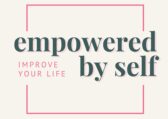
The Essential Developer’s Checklist for WCAG 2.2 Website Accessibility Compliance: What Every Developer Needs to Know Today!
Why WCAG 2.2 Compliance is No Longer Optional
In a world where accessibility isn’t just a buzzword but a non-negotiable, mastering WCAG 2.2 could be the difference between your site thriving or getting slapped with legal trouble. Gone are the days when accessibility was just an afterthought. Today, it impacts user experience, SEO rankings, and yes, even your bank account if you’re not careful. Whether you’re building from scratch or maintaining a site, WCAG 2.2 is the developer’s playbook for making sure everyone, regardless of ability, can access your content.
Now, if the idea of accessibility compliance sends you into a spiral, don’t worry. This post will break it all down into bite-sized, actionable steps. Plus, I’ve got a free infographic at the end that’ll save you tons of time—your go-to checklist for staying compliant. Stick around, and by the time you’re done, you’ll be navigating WCAG 2.2 like a pro.

What is WCAG 2.2 and Why Does It Matter for Developers?
Let’s kick things off by talking about what WCAG 2.2 even is. In short, WCAG (Web Content Accessibility Guidelines) is a set of standards that help ensure web content is accessible to all users, including those with disabilities. Version 2.2 builds on previous guidelines, adding updates to account for newer tech trends and user needs. Think mobile users, people with cognitive disabilities, and more.
So, why does this matter for you as a developer?
- Legal exposure: Failing to meet accessibility standards could land you in hot water with lawsuits.
- SEO impact: Google rewards accessible websites, giving you a better shot at those precious top search rankings.
- Inclusion: Your users aren’t all the same. Making your website accessible means more people can engage with it, no matter their abilities. More users = better business.
Key Updates in WCAG 2.2 Every Developer Must Know
Now let’s dive into the new stuff. WCAG 2.2 isn’t just a rehash of 2.1; it introduces some critical updates you need to be aware of. Here are the top changes:
- New focus areas: There are more guidelines for mobile device accessibility and people with cognitive disabilities.
- Improved navigation: Enhancements around keyboard navigation and focus indicators make it easier for users with motor impairments to interact with content.
- Consistency in forms: If your forms aren’t built to guide users and help them correct mistakes, you could be violating WCAG 2.2 standards.
Make sure you’re incorporating these changes in your projects—whether you’re building or auditing a site.

Developer’s Checklist for Achieving WCAG 2.2 Compliance
Alright, here’s where we get into the nitty-gritty. Ready to roll up your sleeves and get to work? Follow these essential steps to ensure your website meets WCAG 2.2 standards:
- Text Alternatives: Always provide alt text for non-text content like images, icons, and buttons. Your site should make sense even if someone can’t see it.
- Adaptable Content: Your design should work on all devices—from desktops to mobile. This is a big deal in WCAG 2.2, especially as mobile usage continues to skyrocket.
- Navigability: Ensure that all interactive elements (links, forms, buttons) are accessible via keyboard navigation. Not everyone uses a mouse!
- Input Assistance: Forms should help users avoid and correct errors. Think auto-suggestions, error highlights, and clear instructions.
- Assistive Tech Compatibility: Make sure your site works with screen readers and other assistive technologies. If your code is clean, compliant, and well-structured, you’re golden.
Common Mistakes Developers Make with WCAG 2.2 Compliance (and How to Avoid Them)
Even the best developers sometimes drop the ball when it comes to accessibility. Let’s talk about a few common mistakes and how you can sidestep them like a pro:
- Skipping alt-text: Trust me, it’s not an optional task. Every image or button without alt text is a potential accessibility violation.
- Over-complicating navigation: Keep things simple. If users can’t easily move through your site using just their keyboard, you’ve got a problem.
- Forgetting about forms: This is huge! Many developers overlook form accessibility, leading to frustration for users with disabilities. Make sure forms are easy to navigate and understand.
- Neglecting testing: Don’t assume that because your code works for you, it’s accessible. Use screen readers and other tools to test your site.
Ready to Make Your Website WCAG 2.2 Compliant? Download Our Free Infographic!
Now that you’ve got the basics of WCAG 2.2 down, it’s time to make sure you’re staying compliant every step of the way. Whether you’re building a new site or improving an existing one, our free WCAG 2.2 Developer’s Checklist infographic has you covered. It’s packed with all the steps you need to follow to ensure your website isn’t just compliant, but inclusive for all users.
Let’s make your job easier!
Free Infographic
Accessibility lawsuits are on the rise—here’s how WCAG 2.2 compliance can help you protect your site and your career.



Click below to download your free infographic and start putting WCAG 2.2 into action today!
[Download the WCAG 2.2 Developer’s Checklist Infographic]
Take Action and Future-Proof Your Website
Let’s face it—accessibility isn’t just about avoiding a lawsuit (though that’s a pretty good reason to care!). It’s about creating a web experience that’s inclusive, user-friendly, and future-proof. By following WCAG 2.2 guidelines, you’re not only meeting legal requirements but also ensuring that your website can be enjoyed by as many users as possible.
And friends, if you are currently looking for your next job, we’ve got you covered too! Check out our Job Seeker Toolkit next!


